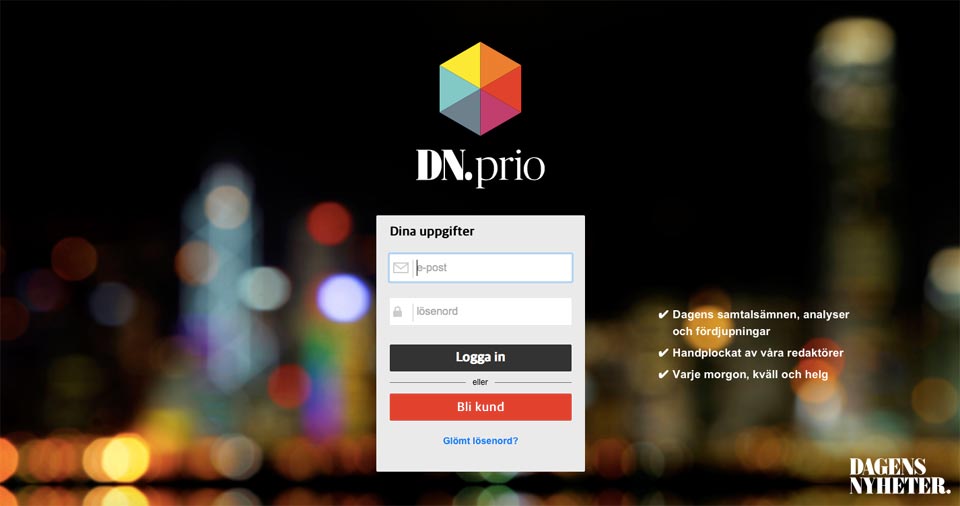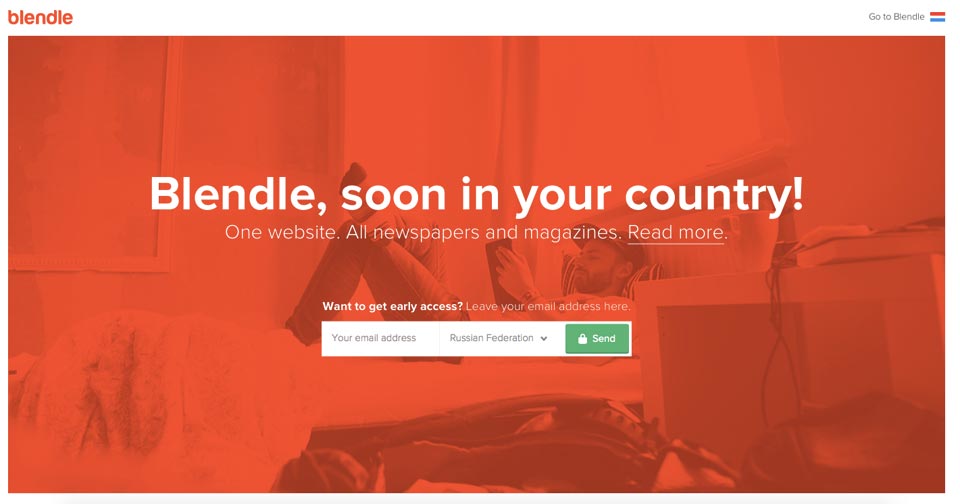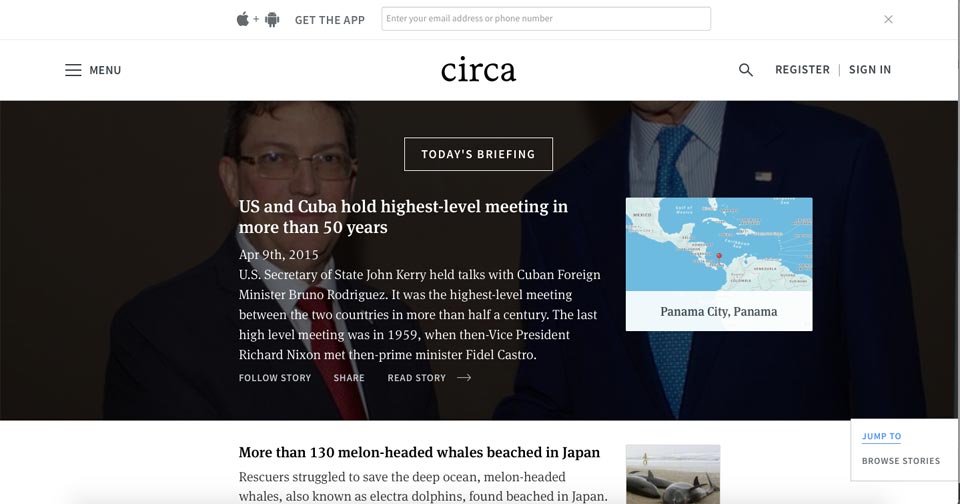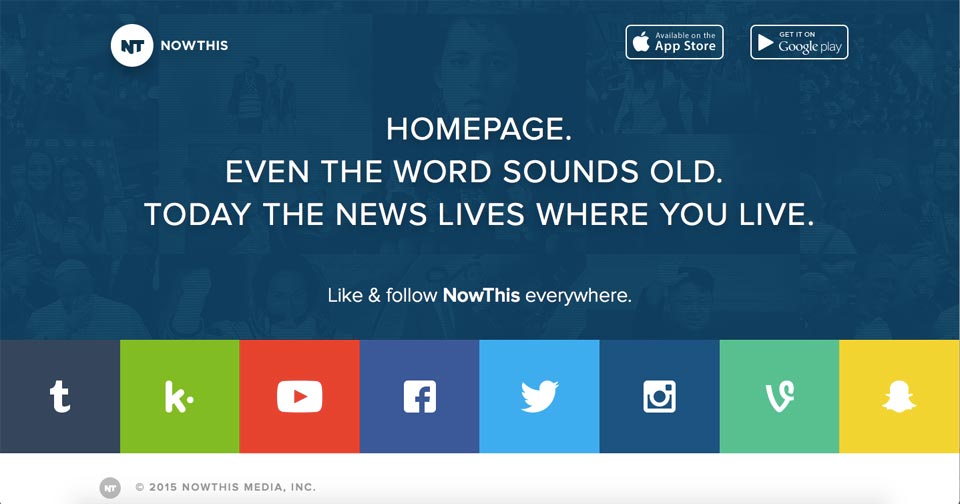
5 Projects Changing the Mass Media Market
2014 and the beginning of 2015 have brought us new media projects that are outstanding in quality and quantity. The most notable among them may be vox.com. Created in 2014, it was under the direction of former Washington Post columnist Ezra Klein for its first nine weeks, and the resource has in fact begun the revival of “explanatory journalism,” having added a technological format. (However, many media experts have deemed the project as too vulgar for its representation of complex information in its simplest form.)
It would be remiss not to mention Buzzfeed.com. This resource was released quite a while ago and has not shown itself well from a journalistic point of view. However, in the second half of 2014, the site procured $50 million in investments for development and sharply changed course: having gotten the audience’s attention via cheap content, the founder of Buzzfeed, John Peretti, decided to switch his readers on to serious journalism and released several new services. Among them is the Buzzfeed Motion Pictures video division, for which they hired Hollywood producer Michael Shamberg (“Pulp Fiction”) as a consultant.
What’s more is that, aside from Vox.com and Buzzfeed.com, which don’t need any introduction, a number of other outlets have appeared that also demand our attention.
DN.Prio

An evening application to go along with the Swedish morning daily, Dagens Nyheter. The gist of the project lies in the fact that. The editorial team manually selects the most important publications on the paper’s site, as well as the most resonant debate on social networks dedicated to the local agenda.
DN.prio from Gunnar R Johansson on Vimeo.
Project development began after it became clear that the launch of the tablet version of the newspaper had failed. Subscribers didn’t want to read what they had already read in the morning print version while on the way to work. Then, the digest’s format was created. The amount of employees assigned to the development of DN.prio — 50 persons — speaks to the importance of the project.
NOD: News on Demand

In 2014, journalist Mary Katherine Beaut launched a media project that, in her own words, is dependent on people who don’t like news.
When you first open the reader, you are offered three main news topics selected by the editors. The reader decides what he likes and what he doesn’t like. The system remembers not only topics that interest you, but also your chosen article length so that next time you are suggested articles of the same interest and format.
To put it simply, the technology is based on two components — a human curator (news selection) and an automatic aggregation of news from different sources.
Blendle

The service that is already nicknamed iTunes for articles was booming at the end of last year. The project of Dutch journalist Alexander Klëping allows readers to buy individual articles and is an alternative system to one where the user has to buy a subscription to the whole site when all he really needs is one article. Today Blendle has around 22,000 regular readers just from The Netherlands.
The Washington Post, The New York Times, and The Wall Street Journal all came under the banner of Blendle in mid-March, 2015 (the three are all investors in the project). Having signed these publications, Blendle took a big step beyond the borders of The Netherlands. At the Digital Media Strategies conference, which was held in London in March, Alexander Klëping announced the next countries where the project will be actively developed — France and Germany. It is unknown, however, if and when the project will move eastward.
Circa

When this project was released in 2012, it was exclusively reliant on mobile platforms. Also, the essence was simple. There are tons of news stories in the world that don’t end with one piece of news, but rather continue on. Circa gives you the opportunity to subscribe to a certain theme and receive all of the important updates on it. Since then, the service has grown into an entire news feed in the format of “unfolding” stories.
Over time, the creators realized that their users don’t have a high-grade site. The first stage has given subscribers the opportunity to read articles shared by their friends on both desktop and mobile platforms, and the second stage will see a full-scale site.
NowThis News

This project, on the other hand, has decided to abandon its own site. NowThis News is a small edition, specializing in production of short news videos. If there’s no video, then a slide show with actors and stand-up takes its place. An active social network campaign began as soon as the service was launched, where the service spread short news clips on platforms such as Instagram, Twitter and Vine. And, in the process of developing the project team, a few things became clear: NowThis News is read on mobile devices, NowThis News is read in social networks, and the site and its social network profiles fulfill the same functions.
The team decided to move the content entirely to social platforms last summer. This process was recently completed and the site became just a “holding page” with links to social networks.
Sergey Yakupov
author of mediamedia.me, producer of zvzda.ru.
New and best




